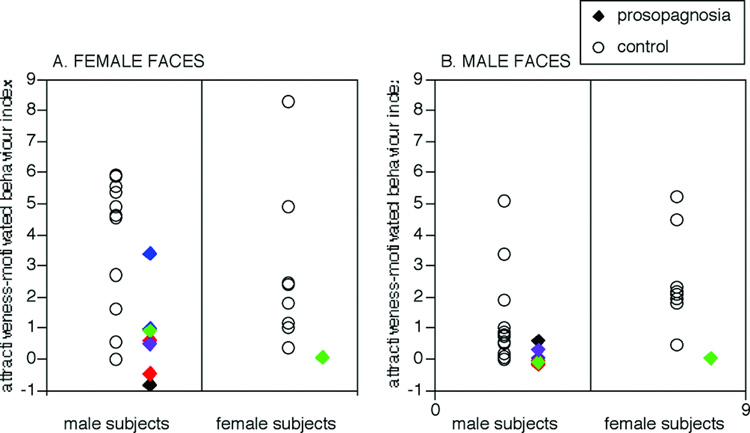Figure 7.
Attractiveness-motivated behaviour. The index for each subject is the mean score for beautiful faces minus the mean score for plain faces. Rating of male and female subjects for male and female faces are shown separately. Rings refer to the control subjects, solid diamonds refer to the prosopagnosic subjects. Colours refer to lesion category: red = bilateral occipitotemporal lesions (subjects 010 and 011), blue = unilateral right occipitotemporal lesions (subjects 005 and 009), green = bilateral anterior temporal lesions (subjects 008 and 015), black = childhood onset prosopagnosia (subject 001), purple = unilateral left occipitotemporal lesion (subject 014).

